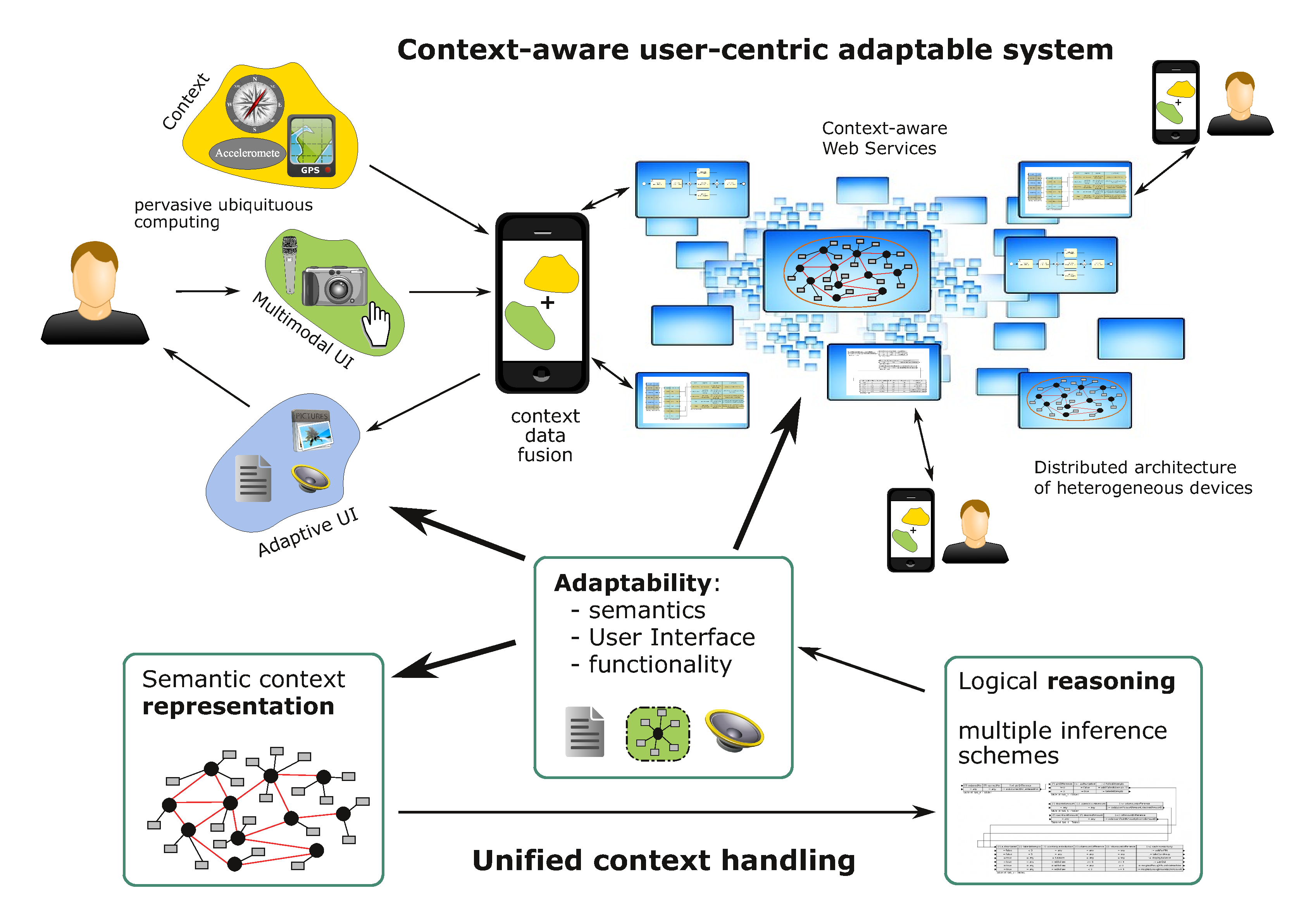This is an old revision of the document!
Table of Contents
Ressconx
Methods for Semantic Representation and Logical Reasoning in Context-Aware Systems (ResSConx)
Description
Research project objectives and research hypothesis
Context-aware systems have been studied in several fields and developed for over 30 years. However, they are still identified as being one of the main trends that will change IT and the economy in the next 10 years. In this research project, the following research objectives related to context-aware systems are addressed:
- semantic context representation: representing context on a semantic level (i.e. its conceptual meaning) suitable for logical reasoning and adaptable to the changing environment by the use of machine learning;
- logical context reasoning: providing an expressive and tractable logical representation for context knowledge base allowing for the use of context for different user-oriented goals;
- design and deployment of context-aware systems: considering a model-driven design and deployment of service-oriented context-aware systems; proposing context-driven design patterns and deployment schemes suitable for adaptable systems.
- unified context handling for system adaptation: providing a holistic
view of context-aware systems based on the user-centric perspective, considering pervasive mobile platforms, and cloud-based service-oriented business applications as complementary components of a context aware system, with patterns for the development of context-aware multimodal user interfaces.
Based on these observations, in this proposal we argue for the following research hypotheses:
- Context modeling methods should be semantic. Context information has to be represented, modeled and processed on a purely semantic level in order to capture the meaning and be relevant to the user. It also has to be adjusted and improved over time and situation, with well established machine learning methods.
- Context-based reasoning should be done on a logical level. Advanced reasoning schemes based on rules and processes can be effectively employed to reason about situations in which the components of a context-aware system operate. Multiple inference scenarios meeting diverse user needs have to be considered.
- Design methods and deployment schemes should be context-driven. The design of a context-aware system should be model-driven, with models related to context representation and reasoning. Important deployment patterns for context-aware systems have to be identified.
- Context-oriented adaptability of a system is needed to meet expectations of diversified user base. We argue that context-oriented adaptation and user-centric perspective are features that bind together pervasive computing with mobile devices and distributed cloud-based and service-oriented software systems. Current features of multimodal interfaces need to be investigated and their potential exploited.
2. Research project methodology The planned methodology will include both conceptual studies as well as experimental work in the form of proof-of-concept prototypes for the evaluation purposes. In order to achieve the project objectives, a number of methods will be used. They are well known to the authors who have successfully used them in their prior work.
Key methods will include knowledge representation and reasoning. For context modeling, we will mostly use the ontologies. Rule-based representation will play an important part in the project. We will use a rule representation developed in previous projects, called XTT2 (eXtended Tabular Trees). The concept of structured and possibly distributed rule bases will be applied to model concepts on the lower and situations on the higher level. For the reasoning tasks, mostly the HeaRT rule engine will be used. The engine has already been applied for reasoning in various environments and rule base is designed to be interpreted in several ways by using different inference modes. Moreover, in the project automatic verification features of the XTT2 knowledge bases will be used.
The machine learning techniques will be used to tune the rules in the decision tables that represent concepts, so that they will be made unambiguous. To model complex context situations we will take advantage of our experience in modeling workflows and business processes. They will serve as a useful tool for visual modeling of the system dynamics that helps in complexity management. The authors have also an extensive experience in the area of distributed system modelling and verification for multi-agent applications and embedded platforms, especially using Petri nets and the Alvis modeling language for parallel systems. They will be used for prototyping on mobile platforms.
The project will also take advantage of adaptable multimodal user interfaces, as not only a system, but also user interfaces need to be adapted with context and for given situation. The authors have an experience in adapting various user interfaces for human-computer interaction.
News
Comments
project
Go back to → projects


